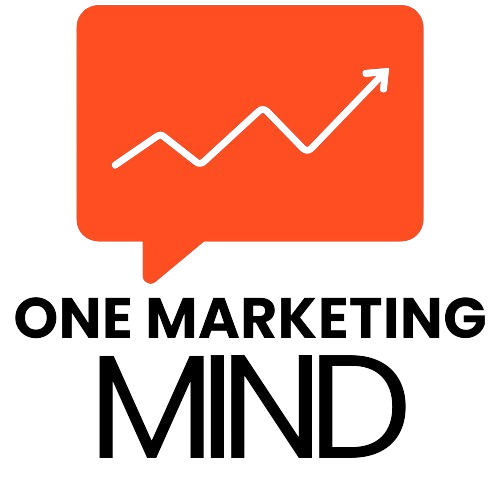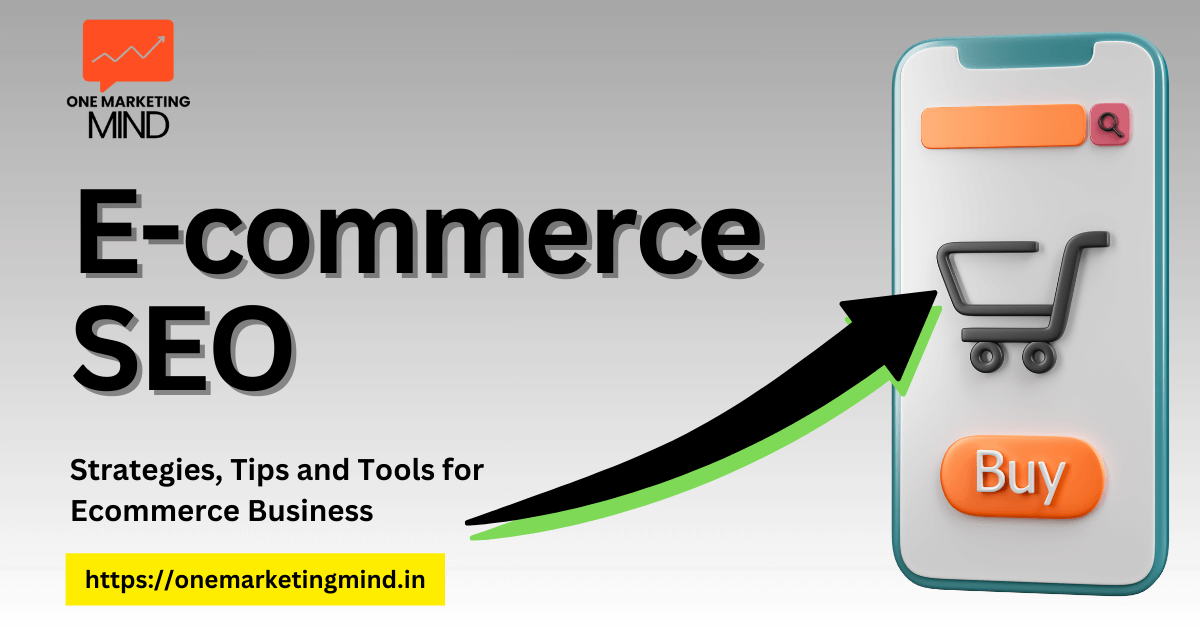In the competitive landscape of online retail, SEO (Search Engine Optimization) is a vital strategy for e-commerce businesses aiming to boost sales and increase revenue. This comprehensive guide will explore the essential aspects of SEO for ecommerce, offering practical tips and insights to help your online store achieve e-commerce success.
E-commerce SEO involves optimizing an online store to rank higher in search engine results pages (SERPs). Unlike traditional SEO, which may focus on a broader range of content types, e-commerce SEO is specifically tailored to enhance the visibility of product pages, categories, and other key areas of an online store. Effective ecommerce SEO can lead to increased traffic, higher conversion rates, and ultimately, greater sales and revenue.

Table of Content
What is ecommerce SEO?
Ecommerce SEO involves optimizing an online store to rank higher in search engine results pages (SERPs). This includes optimizing product pages, category pages, and other content to attract more organic traffic. The goal is to increase visibility, drive more qualified traffic, and ultimately boost sales and revenue.
How to create SEO Strategy for Ecommerce Websites?
Creating an effective ecommerce SEO strategy involves several key steps to enhance your online store’s visibility and drive more traffic. Here are some key steps:
Ecommerce Keyword Research
Keyword research is the foundation of any successful SEO strategy. For e-commerce sites, it involves identifying the search terms that potential customers use when looking for products you sell. Here’s how to conduct effective keyword research for your e-commerce store:
- Brainstorm Seed Keywords: Start by listing broad terms related to your products.
- Use Keyword Research Tools: Tools like Google Keyword Planner, SEMrush, and Ahrefs can help you find related keywords and estimate their search volumes.
- Analyze Competitors: Look at the keywords your competitors are ranking for to identify potential opportunities.
- Focus on Long-Tail Keywords: Long-tail keywords are more specific and less competitive, making them easier to rank for and often more targeted to ready-to-buy customers.
Example:
If you sell running shoes, potential keywords might include:
- “best running shoes for women”
- “affordable running shoes”
- “running shoes for flat feet”
On-Page SEO for Product Pages
On-page SEO involves optimizing individual product pages to improve their visibility in search engine results. Key elements include product titles, descriptions, images, and schema markup.
Optimizing Product Titles and Descriptions
Product Titles: Your product titles should be clear, descriptive, and include primary keywords. Aim for titles that are both informative and appealing to potential buyers.
Product Descriptions: Write unique, detailed product descriptions that highlight the benefits and features of your products. Incorporate relevant keywords naturally and avoid keyword stuffing.
Example:
Title: “Women’s Lightweight Running Shoes – Breathable and Durable”
Description: “Our women’s lightweight running shoes are designed for maximum comfort and durability. Featuring breathable mesh fabric, a cushioned insole, and a non-slip sole, these shoes are perfect for both casual runners and marathon enthusiasts. Available in multiple colors and sizes.”
Product Image Optimization
High-quality images are crucial for e-commerce success. Optimize your product images by:
- Using Descriptive File Names: Instead of “IMG1234.jpg”, use “womens-lightweight-running-shoes.jpg”.
- Adding Alt Text: Include descriptive alt text that incorporates keywords.
- Compressing Images: Ensure fast loading times by compressing images without compromising quality.
Product Schema Markup
Schema markup, or structured data, helps search engines understand the content of your product pages. Implementing product schema markup can enhance your search results with rich snippets, which can include product prices, availability, and reviews.
Example:
<script type="application/ld+json">
{
"@context": "https://schema.org/",
"@type": "Product",
"name": "Women's Lightweight Running Shoes",
"image": "https://example.com/images/womens-lightweight-running-shoes.jpg",
"description": "Breathable and durable running shoes for women.",
"sku": "12345",
"offers": {
"@type": "Offer",
"priceCurrency": "USD",
"price": "59.99",
"availability": "http://schema.org/InStock",
"url": "https://example.com/womens-lightweight-running-shoes"
}
}
</script>Technical SEO for E-commerce
Technical SEO focuses on optimizing the infrastructure of your e-commerce site to ensure that search engines can crawl and index it efficiently. Key areas include site structure, URL structure, and mobile optimization.
Site Structure and Navigation
A well-organized site structure enhances user experience and helps search engines understand the hierarchy of your content. Tips for optimizing site structure include:
- Using a Clear Hierarchy: Organize your site into categories and subcategories that make sense.
- Implementing Breadcrumb Navigation: Breadcrumbs help users and search engines navigate your site more easily.
- Creating an XML Sitemap: An XML sitemap helps search engines find and index your pages.
URL Structure
Clean, descriptive URLs are important for both SEO and user experience. Best practices for URL structure include:
- Including Keywords: Use relevant keywords in your URLs.
- Avoiding Special Characters: Keep URLs simple and readable.
- Using Hyphens: Separate words with hyphens rather than underscores.
Example:
Instead of "https://example.com/p12345", use "https://example.com/womens-lightweight-running-shoes".
Mobile Optimization
With the increasing number of users shopping on mobile devices, optimizing your e-commerce site for mobile is crucial. Key aspects of mobile optimization include:
- Responsive Design: Ensure your site adapts to different screen sizes.
- Fast Loading Times: Optimize images and use techniques like lazy loading to improve speed.
- Mobile-Friendly Navigation: Simplify menus and make buttons easy to click.
Content Marketing for E-commerce
Content marketing involves creating valuable content to attract and engage your target audience. For e-commerce sites, this can include blog posts, buying guides, and user-generated content.
Creating Valuable Content
Produce content that addresses the needs and interests of your potential customers. This can include:
- Blog Posts: Write articles that provide useful information, such as “Top 10 Running Shoes for Women”.
- Buying Guides: Create detailed guides that help customers choose the right products.
- How-To Videos: Produce videos demonstrating product features and usage.
Product Reviews Optimization
Encourage customers to leave reviews, as they can significantly impact purchasing decisions and SEO. Optimize product reviews by:
- Highlighting Positive Reviews: Feature glowing reviews on product pages.
- Responding to Reviews: Engage with customers by responding to their feedback.
- Using Review Schema Markup: Implement schema markup to display star ratings in search results.
Example:
<script type="application/ld+json">
{
"@context": "https://schema.org/",
"@type": "Product",
"name": "Women's Lightweight Running Shoes",
"aggregateRating": {
"@type": "AggregateRating",
"ratingValue": "4.5",
"reviewCount": "89"
}
}
</script>User-Generated Content
User-generated content (UGC) can boost your SEO efforts and provide social proof. Encourage customers to share photos and reviews of your products on social media and your website.
Off-Page SEO Strategies
Off-page SEO involves activities that improve your site’s visibility and authority through external means, such as backlinks and social media.
Backlink Building
High-quality backlinks from reputable websites can enhance your site’s authority and search engine ranking. Strategies for building backlinks include:
- Guest Blogging: Write articles for other websites and include links to your site.
- Influencer Partnerships: Collaborate with influencers to promote your products.
- Resource Pages: Get your site listed on relevant resource pages.
Social Media Integration
Social media can drive traffic to your site and improve your SEO. Integrate social media into your SEO strategy by:
- Sharing Content: Regularly share your content on social media platforms.
- Engaging with Followers: Respond to comments and messages to build a loyal community.
- Running Promotions: Use social media to promote special offers and discounts.
User Experience (UX) for Ecommerce
Focus on providing an excellent user experience. Ensure easy navigation, clear calls to action, and a smooth checkout process. A positive UX can reduce bounce rates and increase conversions.
Measuring and Analyzing SEO Success
To ensure your SEO efforts are effective, it’s important to measure and analyze your performance. Key metrics to track include:
- Organic Traffic: Monitor the number of visitors coming to your site from search engines.
- Conversion Rates: Track the percentage of visitors who make a purchase.
- Bounce Rates: Measure the percentage of visitors who leave your site after viewing only one page.
- Keyword Rankings: Keep an eye on how your target keywords are ranking in search results.
Tools for Measuring SEO Success
- Google Analytics: Track traffic, user behavior, and conversions.
- Google Search Console: Monitor your site’s presence in Google search results and identify issues.
- SEMrush: Analyze keyword rankings, backlinks, and overall SEO performance.
- Ahrefs: Track keyword rankings and analyze backlinks.
Best Ecommerce SEO Tools and Their Benefits
To excel in ecommerce SEO, utilizing the right tools is crucial. Here are some of the best ecommerce SEO tools and the benefits they offer:
1. Google Keyword Planner
Google Keyword Planner is a free tool that helps you discover new keywords relevant to your business.
Benefits:
- Keyword Research: Find keywords with high search volume and low competition.
- Ad Campaign Planning: Plan and optimize your Google Ads campaigns.
- Cost Insights: Get cost estimates for your keyword bids, helping budget your campaigns effectively.
2. SEMrush
SEMrush is a comprehensive SEO tool that offers a wide range of features for keyword research, site audit, and competitive analysis.
Benefits:
- Competitor Analysis: Gain insights into your competitors’ strategies, including their top-performing keywords and backlink profiles.
- Site Audit: Identify and fix technical SEO issues on your site.
- Keyword Tracking: Track your keyword rankings over time and measure the effectiveness of your SEO efforts.
3. Ahrefs
Ahrefs is known for its robust backlink analysis and extensive keyword research capabilities.
Benefits:
- Backlink Analysis: Analyze your backlink profile and identify opportunities to gain high-quality backlinks.
- Content Explorer: Discover the most shared content in your niche, helping you create content that attracts traffic.
- Rank Tracking: Monitor your keyword rankings and see how they improve over time.
4. Moz Pro
Moz Pro offers a suite of SEO tools designed to improve your search engine rankings.
Benefits:
- Keyword Explorer: Find and prioritize the best keywords to target.
- Site Crawl: Regularly audit your site to find and fix issues affecting your SEO.
- Page Optimization: Get recommendations for improving your on-page SEO.
5. Yoast SEO
Yoast SEO is a popular WordPress plugin that helps optimize your site for search engines.
Benefits:
- On-Page Optimization: Easily optimize your content for your target keywords with real-time suggestions.
- Readability Check: Improve your content’s readability, making it more engaging for users.
- XML Sitemaps: Automatically generate XML sitemaps to help search engines index your site.
6. Screaming Frog SEO Spider
Screaming Frog SEO Spider is a powerful website crawler that helps you identify technical SEO issues.
Benefits:
- Site Audits: Crawl your site to find broken links, duplicate content, and other issues.
- Page Analysis: Analyze meta descriptions, titles, and other on-page elements.
- Integration: Integrate with Google Analytics and Search Console for deeper insights.
7. Google Search Console
Google Search Console is a free tool that provides insights into your site’s presence on Google search results.
Benefits:
- Performance Reports: Monitor your site’s search traffic and performance.
- Index Coverage: Ensure all your pages are indexed and identify indexing issues.
- Search Analytics: Analyze which queries drive traffic to your site and understand user behavior.
By Using these tools, you can develop a data-driven ecommerce SEO strategy that enhances your site’s visibility. It helps to improves user experience, and drives more sales. Each tool offers unique benefits, making them invaluable assets in your SEO toolkit.
Conclusion
SEO for ecommerce is a multifaceted strategy that requires attention to detail and ongoing effort. By focusing on effective keyword research, on-page optimization, technical SEO, content marketing, and off-page strategies, you can significantly boost your online store’s visibility, attract more customers, and increase sales and revenue.
Implementing these ecommerce SEO tips and best practices will set you on the path to e-commerce success. Regularly monitor your performance, stay updated with SEO trends, and continuously refine your strategies to stay ahead of the competition. With dedication and the right approach, you can achieve lasting success in the dynamic world of e-commerce.
FAQs about Ecommerce SEO
Is SEO worth it for e-commerce?
Yes, SEO is worth it for e-commerce. Effective SEO can significantly increase organic traffic, improve conversion rates, and enhance the overall user experience. It helps e-commerce businesses reach a broader audience, gain more visibility in search engines, and achieve higher sales without relying solely on paid advertising.
How do I get SEO results for e-commerce?
To get SEO results for e-commerce, you should focus on several key areas:
Conduct thorough keyword research to identify relevant search terms.
Optimize product titles, descriptions, and images with target keywords.
Implement technical SEO best practices, such as improving site speed and mobile optimization.
Create valuable content, such as blog posts and buying guides, to attract and engage users.
Build high-quality backlinks from reputable websites.
Monitor and analyze your SEO performance using tools like Google Analytics and Search Console.
Which e-commerce platform is best for SEO?
Several e-commerce platforms offer robust SEO capabilities, but some of the best options include:
Shopify: Known for its user-friendly interface and built-in SEO features.
WooCommerce: A flexible and highly customizable platform that integrates with WordPress.
Magento: A powerful platform with advanced SEO features, suitable for larger businesses.
BigCommerce: Offers strong SEO tools and a scalable platform for growing businesses.
How much does e-commerce SEO cost?
The cost of ecommerce SEO can vary widely depending on the scope of the project, the competitiveness of the industry, and the level of expertise required. On average, businesses can expect to spend anywhere from $500 to $5,000 per month for professional SEO services. Some agencies may also offer one-time project fees ranging from $1,000 to $30,000, depending on the complexity and scale of the work.
How long does it take to see results from e-commerce SEO?
Answer: SEO is a long-term strategy, and it typically takes 3 to 6 months to start seeing noticeable results. However, the timeline can vary based on factors such as the competitiveness of your industry, the current state of your website, and the effectiveness of your SEO efforts.
What are some common mistakes in e-commerce SEO?
Common mistakes in ecommerce SEO include:
Duplicate content, especially with product descriptions.
Neglecting mobile optimization.
Poor site structure and navigation.
Overlooking meta tags and schema markup.
Ignoring page load speed and technical SEO issues.
How important are product reviews for e-commerce SEO?
Product reviews are very important for ecommerce SEO. They provide fresh, user-generated content that can improve your site’s relevance and ranking. Reviews also enhance credibility and trust, leading to higher conversion rates. Implementing review schema markup can also make your product listings more attractive in search results.
What role does social media play in e-commerce SEO?
Social media can indirectly benefit ecommerce SEO by driving traffic to your site, increasing brand awareness, and generating backlinks. Social signals, such as likes and shares, can also boost the credibility and visibility of your content, which may positively impact search engine rankings.
How can I improve the mobile SEO of my e-commerce site?
To improve mobile SEO for your e-commerce site, ensure that your site has a responsive design, optimize page load speed, simplify navigation for mobile users, and use mobile-friendly images and content. Additionally, implement Accelerated Mobile Pages (AMP) to enhance mobile performance further.

